Experiment Reactions in High-Pressure Fluid Cells
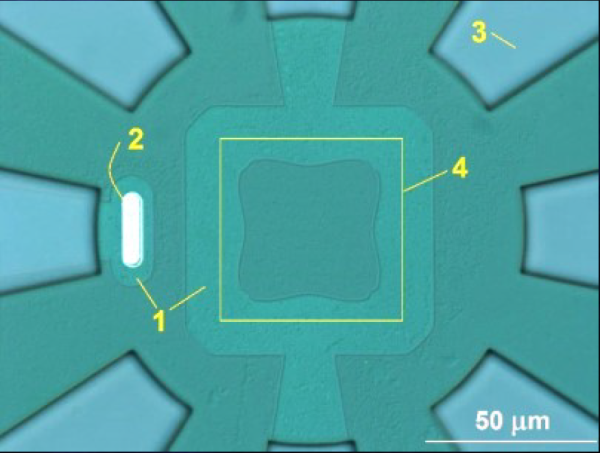
- Implanted region.
- Intra-cavity gold electrode.
- PSG surrounding the microchannels 5.
- Drawn frame showing the position of the membrane.
Fluid cells for 3-30 MPa were developed for covering an intermediary pressure domain necessary for studying chemical and biochemical reactions using X-rays or other beams transmitted through a membrane-limited cavity that can be also a reaction chamber for in situ observation.
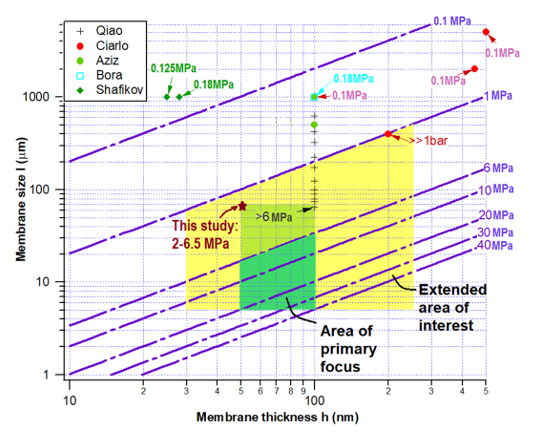
The novel cells will contribute to progress in fields as diverse as materials science, chemistry, geology, and biology by enabling atomic and molecular-level characterization of the behavior of materials at high pressures, catalysis and reactions at high pressure, geologic ores formation in the deep Earth crust, and understanding deep-sea marine biology and biochemical processes.
HPFC Design Specifications:
Cavity/reaction chamber limited by thin, beam-transparent membranes. Membranes as thin as possible, but of the area as large as possible (large field of view), while resisting burst. Membranes are thin enough for analyses, but allow as small as possible deflection (volume variation) under high pressure. At least 8 microfluidic ports. At least two electrodes. Standardized microfluidic connectors. Possible integrated pressure and temperature sensors
Customization of MHPFCs can include Nr. of microfluidic channels, nr. of electrodes, size of cavity & microfluidics channels, pressure range, type of connectors, type of support, etc.
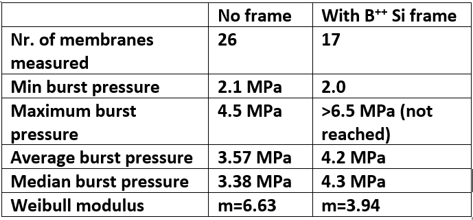
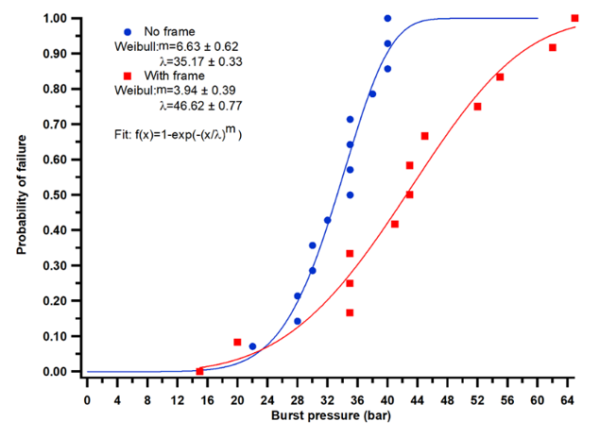
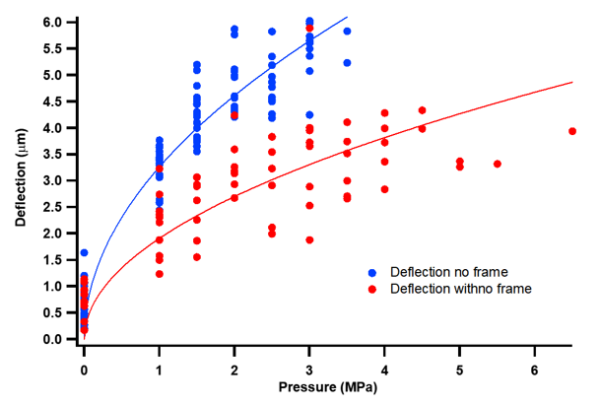
Weibul Plot of Membrane Burst Deflection vs Pressure

